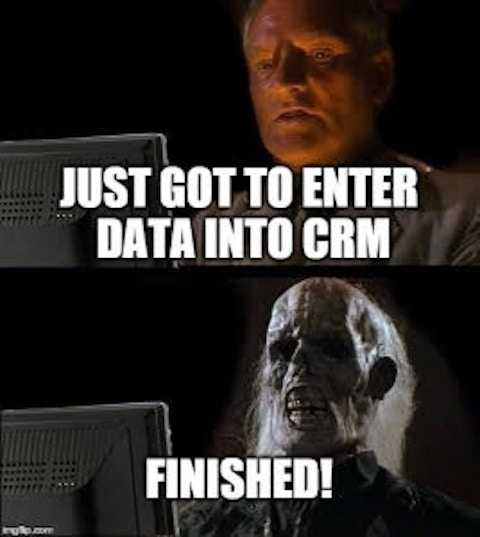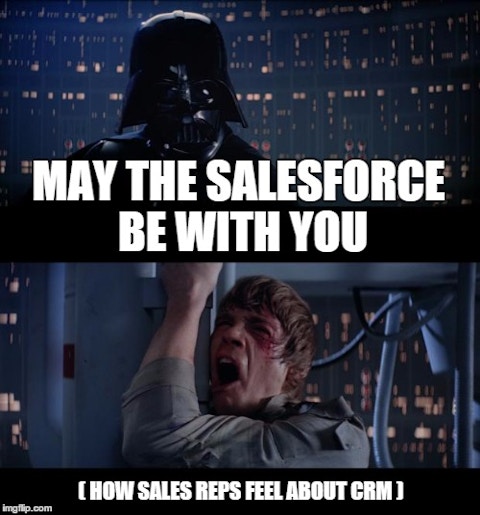Gary Wellington, from Armstrong Ceiling Solutions, joins the show to discuss how building material manufacturers can implement a CRM with the buy-in of your sales team.
More About This Show
The Smarter Building Materials Marketing podcast helps industry professionals find better ways to grow leads, sales and outperform the competition. It’s designed to give insight on how to create a results-driven digital marketing strategy for companies of any size.
In this episode, Gavin shares how a CRM can grow your sales, plus what not to do when introducing the new technology to your sales team.
_________

Gavin Wellington is the Regional Manager of Southeast Asia for Armstrong Ceiling Solutions. Originally from Australia, he is now based out of Singapore and manages a sales team of 16 people across six core markets: Singapore, Malaysia, Thailand, Vietnam, Indonesia and the Philippines.
No two cultures are alike in this region, which Gavin found when building relationships with both customers and with the sales team. Through trial and error, he has crafted a unique and effective approach to communicating with his sales team and getting their buy-in on new company initiatives, one of which has been implementing a CRM database.
Leading Effectively With the Right Communications Approach

Whether the members of your sales team are spread across a global region or a national one, it’s important to engage them in a way that truly works. When Gavin first started in his managerial role of the Southeast Asian team, he offered his support and asked if anyone had questions.
There was silence on the conference call, so he assumed everyone was on the same page. However, culturally, his message had been understood differently by those on the call: They thought he didn’t really know what he was talking about. Gavin advises new managers to be wary of silence acceptance. Over time and from feedback, he’s learned to be more direct and use fewer words to get his point across.
Today, Gavin regularly stops to think about how he’s going to present a new idea to his team. This can be tricky since someone from Thailand communicates very differently than someone from Indonesia. The main message for building material sales is the same everywhere: Drive specifications, create value, work with your general contractors, defend your specifications, and work with your installers or distribution partners. But there are cultural nuances that make each market different.
Communication Hacks
There are some cheat ways to communicate with your sales team and customers, regardless of culture. Gavin’s team worked on a project that was built in Vietnam but designed in Malaysia. He and two other Armstrong sales members met with three of the architects, who immediately asked him to present his products.
Gavin’s response? He offered to either talk about ceilings for four hours or hear about the architects’ specific project. The prospects immediately jumped into the challenges they were facing at the time.
This tactic allowed the Malaysian architects to see some vulnerability in Gavin and his team. The conversation immediately went to the local language and the project moved down the chain as Gavin intended. Don’t be afraid to show a more vulnerable side and ask your lead if you’re wrong. That gives them a chance to help you by offering their perspective.
How to Use a CRM to Make Your Sales Team More Successful

Gavin and the rest of the management team at Armstrong used a top-down approach when engaging the sales team about implementing a new CRM. In hindsight, he would not have used this approach as they didn’t get immediate support and engagement from the team.
To eventually get the team’s buy-in, Gavin explained how a CRM could help their sales. He told them they couldn’t afford not to have a CRM because no one’s memory is good enough to remember the details of what architects to call, which projects to spec, track and close, and which installers and distributors are current partners.
Again, it comes down to the issue of offering some vulnerability. Essentially, Gavin admitted he’s not good at organizing things, so a CRM is a helpful tool for him to do this.
Combating Resistance From Your Sales Team

CRMs are popular for managers because they want business data, but your sales team may think it takes them out of selling. How do you combat that feeling?
Gavin initially did six-hour trainings with his team on how to input data into the CRM. Ultimately, this strategy backfired. Instead, Armstrong ended up hiring someone directly from Salesforce who trained the team on how to use the CRM to help them save time. It was a light bulb moment, and for Gavin’s tech-savvy team, it created a true attitude shift.
One helpful hack the team learned is to use the Salesforce app on their phone on the way to and from meetings. They can use the talk-to-text feature to update customer cards or contacts, all of which can be done while sitting in a cab during heavy traffic.
Simplicity is also helpful when introducing a new CRM. Armstrong’s original internal PowerPoint was 120 slides. The Salesforce facilitator’s was just 20.
Another strategy for motivating your team is to point out someone who’s using it well. During team calls, Gavin highlights someone who has figured out a shortcut or another helpful tip. If someone gets a shout out, others will be encouraged to do the same (it helps that salespeople can be competitive).
Helpful Data From CRMs
CRMs provide a lot of useful insight to manage a market for both sales team members and managers. The dashboard gives an analysis of where each salesperson is for the year, plus what types of products have already been pushed.
For a salesperson, this is helpful in figuring out how to achieve the rest of their goals for the year. For a manager, it lets you know what grade of specifications are being pushed by each salesperson. You can see who’s pushing generic specs and who’s doing a better job of developing customer solutions with specific products.
The CRM also lets you see your long-term pipeline. This is especially helpful in commercial sales because large projects like an office building or hotel can take a year or two to close. If you know your success rate, you can see what your sales could be like in the next 23 months.
Process for Internal Buy-In and Enforcement
Gavin also uses the CRM dashboard to see how many projects and opportunities are currently under development for each salesperson. Every couple of weeks, he strategically shares some of those analytics with the entire team. He also uses the information as a starting point during manager discussions by showing a lower performing team member what Gavin sees and finding ways to change the numbers.
Together, they can look at the number of new projects, projects closed (including won vs. lost), success rates and how many opportunities had higher grade specifications. Once this data is revealed, the salesperson knows exactly how the boss is measuring him or her.
While a CRM can’t show you all of the interpersonal nuances that go into a deal, like getting dropped by a general contractor at the end of the process, it can help your sales team get excited by seeing real-time analysis of their efforts and where they can improve tactics to close more sales.
Advice to Other Building Material Manufacturers
The most important part of implementing a CRM is getting buy-in from the sales team. Position the CRM as a way to make them more efficient, like a virtual PA. You should also write off the cost of the CRM for the first year because it’ll take a couple of years to reach its full potential.
When you build the momentum from the ground up starting with the sales team, they’ll be more motivated to use the tools and see the big picture, rather than getting bogged down by having to type in every interaction.
Want to connect with Gavin about his cross-cultural experiences or CRMs? You can find him on LinkedIn and Twitter.
If you have questions about choosing the right CRM for your team, let us know! Shoot us an email at [email protected] with all of your CRM questions.





